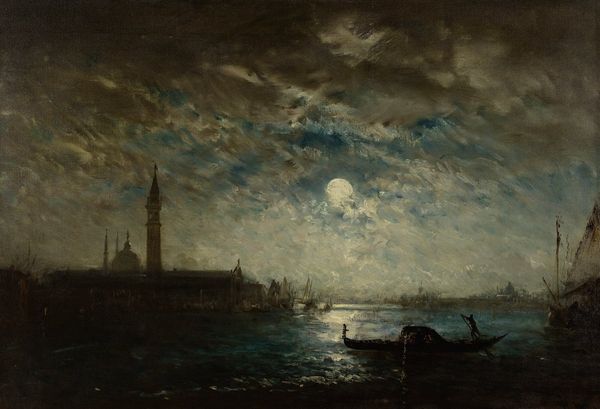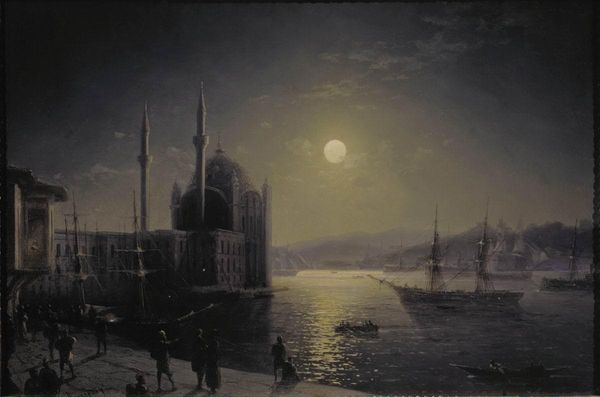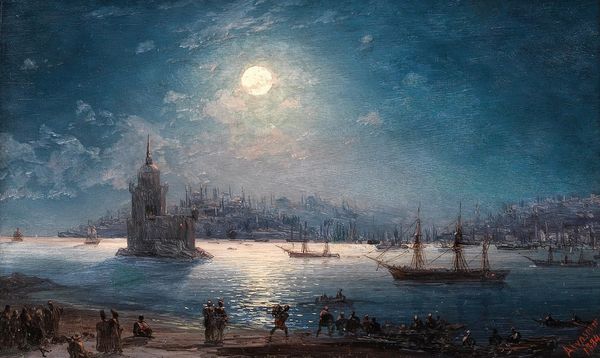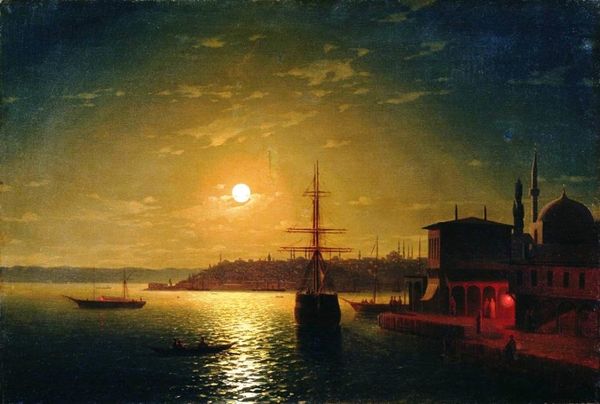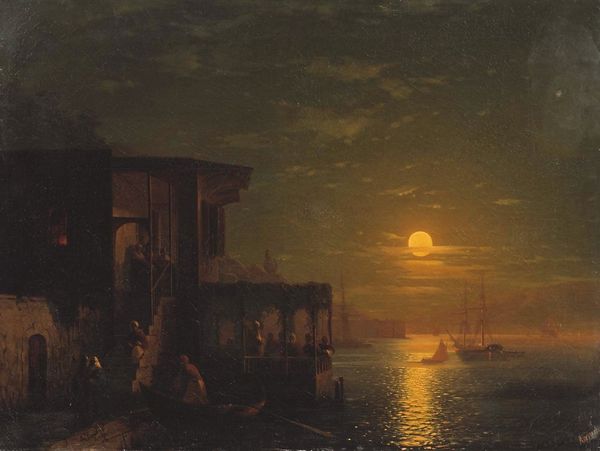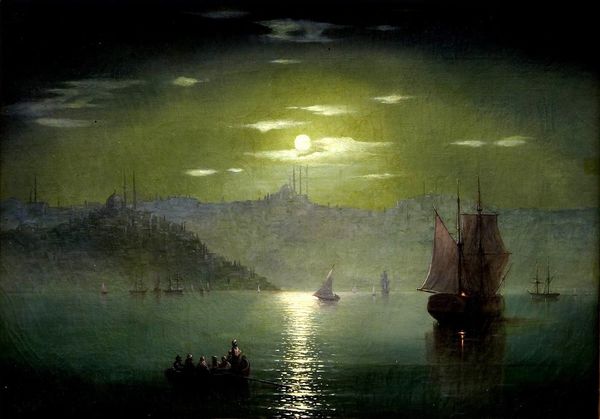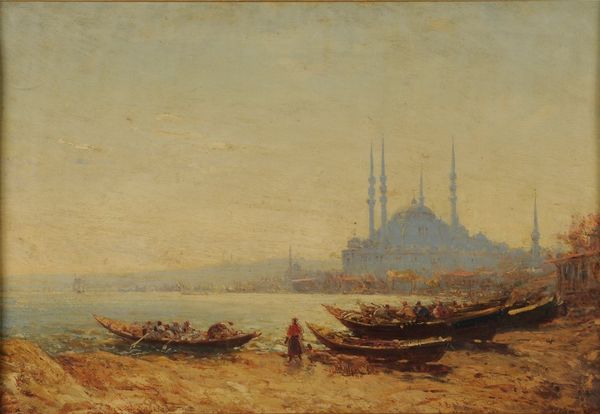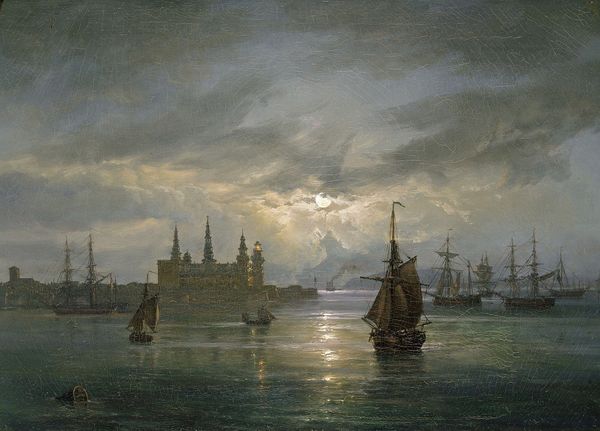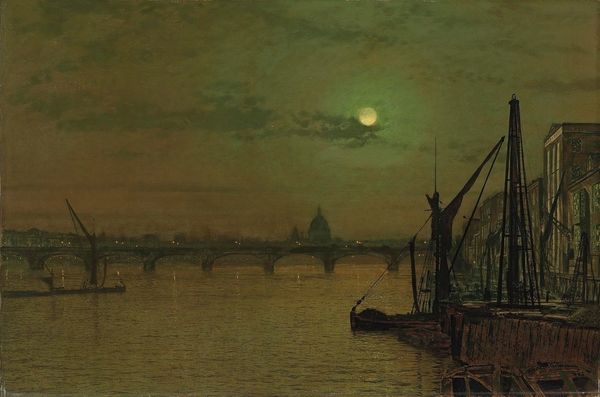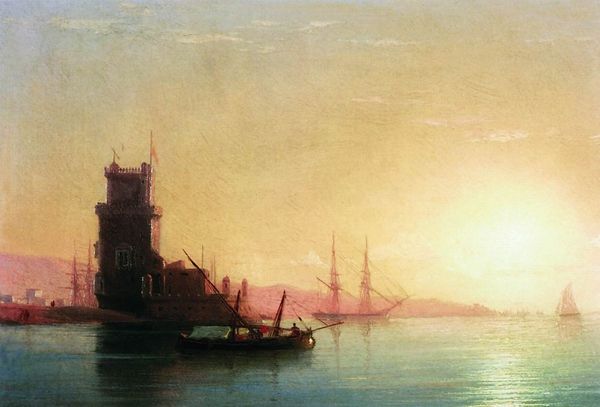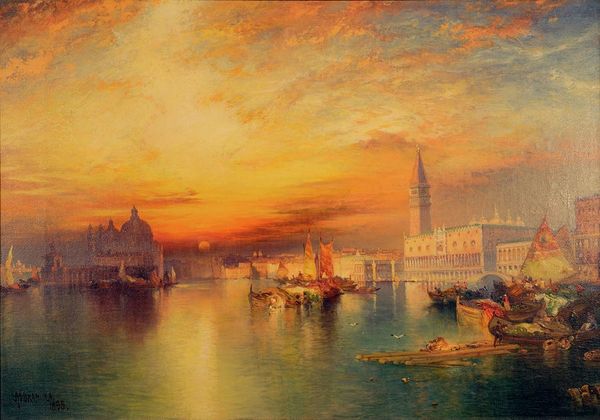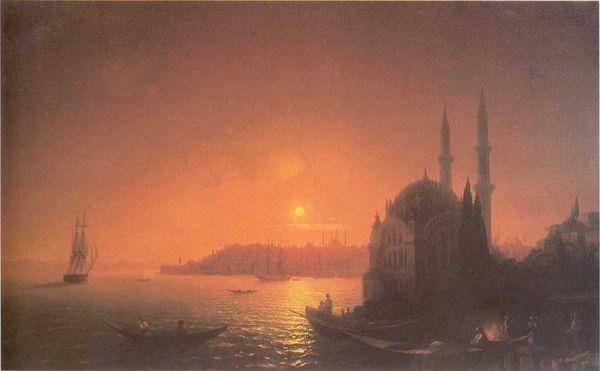
Dimensions: 62 x 98 cm
Copyright: Public domain
Editor: Here we have Ivan Aivazovsky's "Moonlit view of the Bosphorus," an oil painting from 1884. It's dominated by this huge, luminous moon... everything seems bathed in a kind of silvery, almost ethereal light. What do you see in this piece? Curator: The moon itself, that radiant orb, functions as a profound symbol. The moon, universally, is connected to cycles, to time, to feminine energy and mystery. In a broader sense, especially within the Romantic and Orientalist context of this painting, that luminosity might represent enlightenment sought in the East. It casts light – both literally and metaphorically – on a culture Western artists sought to understand, and often romanticized. Editor: So, the light isn’t just pretty, it's about searching for something? Curator: Precisely. Consider too how Aivazovsky juxtaposes the moon with the architecture—minarets, very possibly Hagia Sophia or the Blue Mosque, piercing the night sky. The ships become almost spectral. Aivazovsky seems to capture a moment when cultures intersected under the common, watchful eye of the cosmos. The symbol of the Bosphorus represents a passage and crossroad between Europe and Asia, so do you think Aivazovsky reflects the spirit of progress through visual symbols? Editor: I see it now. The way the moonlight catches on the water, reflecting both the sky and the city... It's not just a pretty scene, but also a picture of different worlds meeting. The bright moon acts like a connecting device… Curator: Exactly. It invites reflection on the interplay of cultures, histories, and perhaps even aspirations. Its artistic genius creates a moment caught in time through symbols! Editor: Thanks! I’ll definitely be looking at moonlight differently from now on!
Comments
No comments
Be the first to comment and join the conversation on the ultimate creative platform.
